Updated: 21-Nov-2022
Pratt & Whitney was a former machine tool factory that in 1925 created a subsidiary on the impulse of aircraft engine experts such as F. Rentschler, G. Mead and A. Willgoos.

“Pratt and Whitney logo”
-They began manufacturing these engines under the Pratt & Whitney name, later a United Aircraft Corporation division.
-It was considered the most important manufacturer of aviation engines in the world, although later General Electric has made enormous progress in turbines.
-But today we must not forget Rolls-Royce, Snecma/Safran and the micronization of Soviet industry, today Russian and Ukrainian.
-During the first 20 or 30 years of its production, it specialized in high-power radial engines.
-It was located in East Hartford, CT.
-During WWII almost 3/4 of the American fighter planes were powered by Pratt & Whitney engines.
-Naturally construction effort diversified in this period with Buick, Ford, Chevrolet, Nash-Kelvinator, Jacobs and Continental intervening. All these engines were built under license.
-To enrich the text referring to this brand, it should be added that the promoters were Francis A. Pratt and Amos Whitney.
-Curiously, when he was only 25 years old, Pratt went to Hartford to work at Colt Armory, famous for its revolvers.
-Subsequently passing with high position to Phoenix Iron Works.
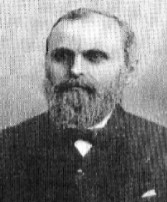
“Francis Pratt”
-Amos Whitney was also at the Colt Pistol Factory, gaining prestige as an executive and effective salesman.

“Amos Whitney”
-But for the brand and for us engine studiers, the designers of most of the piston engine range were Frederick B. Rentschler (former president of the Wright Aeronautical Corp.) and George Mead.
-The meeting of these people and the then president of P&W, Clayton Burt, led to the formation of the division called "Pratt & Whitney Aircraft Company" in 1925.
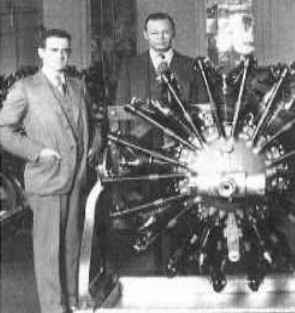
“Mead and Rentschler with a Wasp R-1340”
-The radial engines that made milestones for the brand, ordered by displacement, were:
-R-985, Wasp Junior
-R-1340, Wasp
-R-1690, Hornet (y el R-1860)
-R-1830, Twin Wasp
-R-2000, Twin Wasp
-R-2180, Twin Hornet
-R-2800, Double Wasp
-R-4360, Wasp Major
-And less known:
-R-1535, Twin Wasp Junior
-R-2060
-R-2270
-And the non-radial ones:
-X-1800
-X-3130, (XH)
-R-3730, (XH)
Note 1: The "United Aircraft Corporation" was founded in 1928, bringing together the interests of P&W, Boeing and Vought and with Sikorsky, Stearman and Hamilton-Standard joining a little later.
Note 2: As a curiosity, in the war effort, the licenses granted to American companies to build P&W engines had the symbolic price of one dollar.
-The R-985, “Wasp Junior” was the smallest of the brand, starting with 300 HP and reaching 450 HP in its last stages.
-It was a 9-cylinder, air-cooled radial with a total displacement of 985 cu.in.
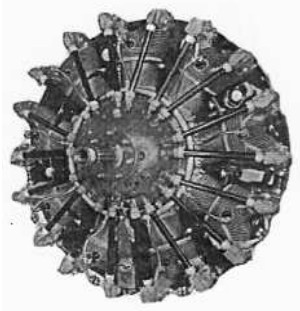
“P&W, Wasp Junior”
-Chronologically the R-1340 "Wasp" was the first engine built by Pratt & Whitney.
-It was done in a few months, from July to December 1925, initially giving 425 HP instead of the expected 400.
-Soon it would reach 600 HP (in some competition models it would reach 850 HP).
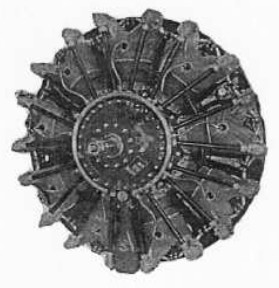
“P&W, Wasp”
-Officially known as R-1340 for its Radial cylinders “R” and for its 1340 cu. in. displacement. The design was by Willgoos.
-It was a simple engine without compressor and gear, and it was considered medium power.
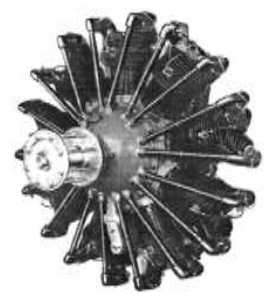

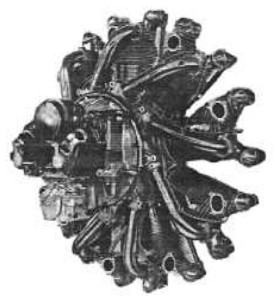
“First Wasp engines”
-The first Wasps had a simple appearance, as for the cylinder fins, they were easy to count.
-The engine had a float carburetor and the propeller was fixed with a hub for the wooden ones.
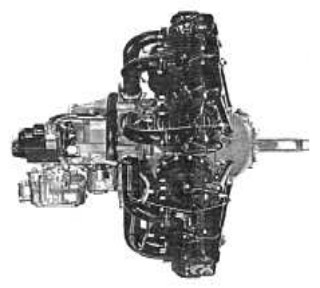
“R-1340”
-The latest R-1340 models are more refined with thinner, deeper and more efficient fins. The adaptation for the propeller hub was for a splined shaft, and finally the carburetor would be an injection one.
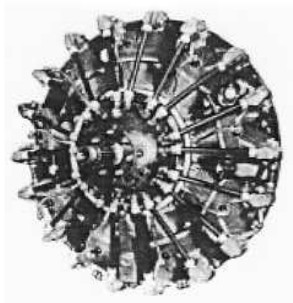
“R-1340”
-A very popular application of this engine has been on the T-6 Texan, training aircraft, seen in the western armed forces. It was also built at the P&W plant in Canada where the first R-1340 came out in 1952.
-The R-1535, Twin Wasp Junior started with 600 HP reaching 825 HP in WWII. It owns a speed record installed on Hughes' H-1 aircraft.
-Its advantage was its small frontal area, which is why it was chosen for said aircraft as it gave less resistance and provided greater forward visibility to the pilot.
-It appeared in 1932, and joined two 7-cylinder rows of the Wasp Junior, with 14 cylinders in total.
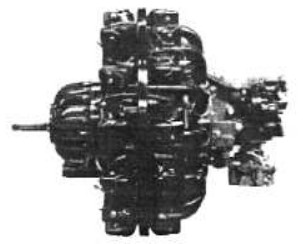
“P&W, R-1535-A”
-The first production of the R-1535 was the "A" series. As a curiosity it had the valve train lubricated with grease.

“P&W, R-1535-B”
-The Twin Wasp Junior AG series had a large-size gearbox and an unusual shape for the brand.
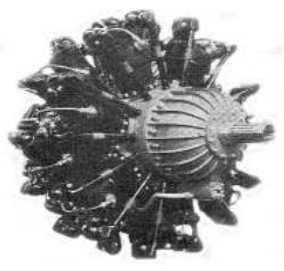
“Twin Wasp Junior”
-The Twin Wasp "Junior" R-1535 gave 700 HP at 2,500 rpm. While the Twin Wasp R-1830, the larger one, reached 1,000 HP at 2,650 rpm.
-In the “R-1535-B” series, lubrication was already carried out by the engine oil itself. P&W also experimented with a two-stage supercharger on the R-1535, although this was not included in the production configuration.
-The R-1690 was known as the "Hornet". It was designed by Willgoos and Mead. The Hornet came out after the Wasp, in the year 1926.
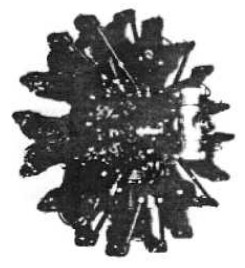
“Hornet A”
-It was delivered to the US Navy to be installed on the T4M torpedo boat, where it outperformed the planned Packard in several points, and perhaps this was the tipping point whereby the Navy stopped using liquid-cooled engines.
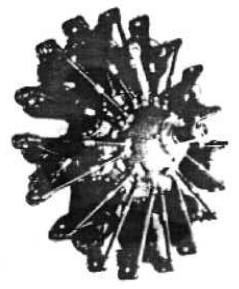
“Hornet B”
-Around 1930, P&W enlarged the Hornet (B) to 1860 cubic inches, (R-1860) adding gear and superchargers (SB-1, S1B1, S2D1, S3B1 ...). The Hornet was installed on the Lockheed 18 in its R-1690 S1E-2 and S1E-3 versions.
-The Hornet A was built by FIAT as A-59.
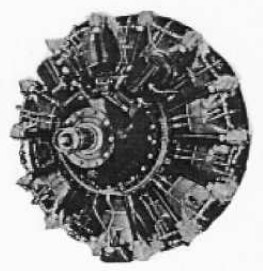
“R-1830”
-The R-1830 Twin Wasp started its life in 1932 with 750 HP and reached 1,000 HP in 1936.
-With its 14 double-row cylinders it gave 1,250 HP at the time of its full development.

“R-1830”
-It was installed on the B-24 Liberator with a direct supercharger and a turbocharger in the exhaust. These engines were also seen on the Catalinas.
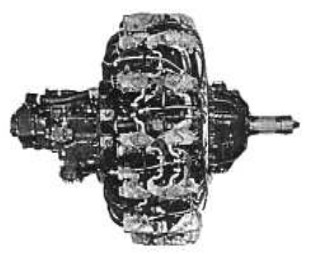
“Buick R-1830”
-Of this engine 178,000 units were built. Buick and Chevrolet were involved in this effort. The design was headed by Luke Hobbs. As a curiosity, Hobbs came from Bendix where he designed injection carburetors, the well-known Bendix-Hobbs.
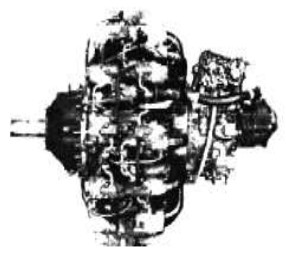
“R-1830, by Chevrolet”
-The R-2000 is the Twin Wasp, an R-1830 version enlarged to 2,000 cubic inches. In fact, the pistons increased their bore from 5.5 to 5.75 inches, maintaining the 5.5 inch stroke.

“P & W R-1830 Twin Wasp”
-Of course, many variants and series of each of the brand's engines were made. For the Twin Wasp, to name a few, SA2.G, SA4-G, SB-G, S2A4-G, SB3G, S2A5-G, etc. etc.

“Twin Hornet”
-The Twin Hornet with 2,180 cu. in. gave 1,150 HP at 2,350 rpm.
-Below a curious photo of a P&W, Wasp-A model from 1927. In a test by NACA a mechanical Roots type supercharger was installed. And as we can see, with an external discharge by-pass system to control the intake pressure.

“Wasp A-model with Roots”
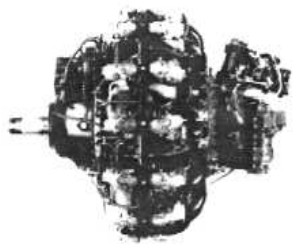
“P&W, R-2000”
-They were famous on the Douglas DC-4 and C-54. A geared double-row engine with 14 cylinders giving 1,450 HP at 2,700 rpm.
-Firstly the R-2000 gave 1,300 HP at 2,700 rpm using 87 octane gasoline, increasing to 1,350 with 100 octane gasoline and the 1,450 HP was reached with 100/130 octane gasoline.
-Buick also made them.
-We will see the R-2060 later because even though it was a radial, it was still experimental. It was made in the years 1930-1933. It gave 1,000 HP and was liquid cooled. There is an entry in the USNA with detailed information on this engine with registration number 3233/452.8.
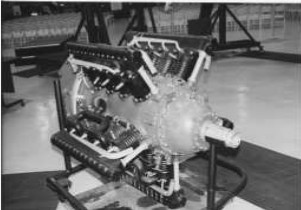
“R-2060 at the Pratt & Whitney Museum”
-The R-2180 was the Twin Hornet that was tested in 1935. This engine was rated at 1,400 HP and was sometimes mistaken as the Twin Wasp.
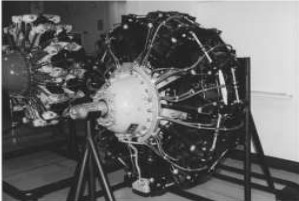
“R-2180 at the Pratt & Whitney Museum”
-And we also show the R-2180-E version, with clear differences, such as the magnetos at the front.

“R-2180-E at the same museum”
-The Double Wasp was the R-2800. In 1936 work began on this double-row, 18-cylinder engine with the intention of replacing the R-1535 and R-2180.
-It was designed by Mead and Luke Hobbs, while Willgoos himself was the Chief Engineer. This engine could use water-methanol injection.
-Its powers were in the order of 2,100 HP at 2,700 rpm, geared and a two-speed supercharger. The -32W had a turbocharger.

“P&W, Double Wasp”
-The R-2800s powered the Hellcat, Tigercat, Bearcat, Lockheed PV-2, Curtiss C-46, Invader, B-26, etc.

“R-2800”
-They were also built by Ford and Nash-Kelvinator.
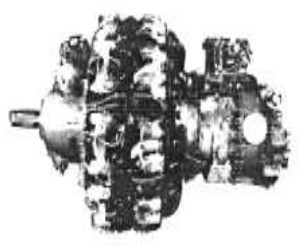
“R-2800 for the Hellcat”
-On the Corsair F4U-5, the R-2800-32W engine was installed with a double supercharger placed at the rear with hydraulic transmission, and to one side. For this reason it was known by the nickname “R-2800 Sidewinder”. At low altitudes only one stage was used.

“R-2800 Sidewinder”
-In the case of the Double Wasp on the P-47 “Thunderbolt”, in addition to the mechanical supercharger, it had a General Electric turbocharger powered by exhaust gases, towards the middle of the fuselage.
-There were more common versions like -29, -57, -59, -61, -73, -77, etc but the R2800 CA18/CB17 engine reached 3,000/3,100 HP when in 1969 after 30 years, Darryl Greenamayer took away the world speed record from the Messerchsmitt Me209V1.
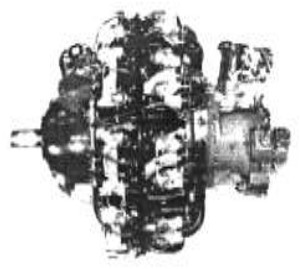
“R-2800 by Ford”
-The Double Wasp can be considered as one of the maximum expressions of engine architecture in 18-cylinder radials and double row.

“R-2800-59”
-The R-2800 was installed in civil aviation on the Douglas DC-6A, DC-6B, Canadair CL-215 aircraft and on military transport aircraft such as the Fairchild C-123, C-118, etc.
-On the F6F Hellcat, the R-2800-10W was mounted with a two-stage compressor. Air enters a larger compressor, passes through an intercooler, enters the carburetor, and follows the second, smaller-than-first compression stage. The same engine is installed on the Northrop P-61 “Black Widow”.
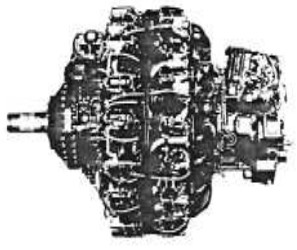
“R-2800-57”

“R-2800-73”
-The -29 version was intended for the Northrop XP-56 bomber.
-As we see in the below illustration, the engine was mounted at the back of the wing and it had to drive two counter-rotating propellers, which gave stability to the aircraft and took better advantage of the delivery of so much power.
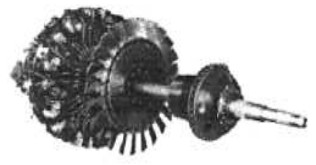
“R-2800-29”
-Of this R-2800 version only 4 engines were built. Northrop used these experiences for the future Flying Wing.
-Now we come to the R-4360 Wasp Major. The first tests were made in 1941.
-This large four seven-cylinder-row engine, totaling 28 cylinders, was intended for large bombers and powerful combat aircraft.
-It gave 3,000 HP so it replaced the liquid and air cooled designs that were made at P&W until then. (R-2060, R-2270, X-1800, XH-3130 and XH-3730).

“R-4360 prototype”
In the picture below we see the Republic P-47 “Thunderbolt” powertrain system.

-The exhaust gases are directed towards the turbocharger of respectable dimensions located towards the stern of the plane. At the turbo outlet, the intake duct crosses a larger one, having installed at this point an intercooler or heat-exchange radiator, to cool the air and restore density before reaching the engine at the front in a compressed state.
-At the end of World War II it had reached 3,500 HP although later it would reach 4,000 HP.
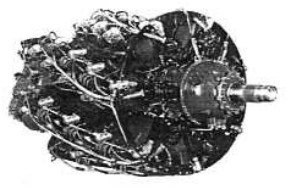
“R-4360”
-It was this engine that was finally installed on the B-36, as well as on the Convair XC-99, Hughes XF-11, Martin XP4M-1 and on the French Armagnac.
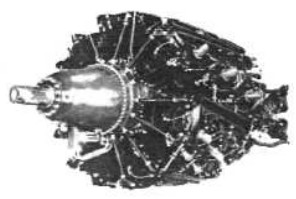
“R-4360, with the X-1800's gearbox”
-Ford had the license to build this engine.
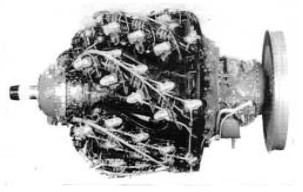
“R-4360, with fan”

“R-4360, with additional supercharger”
-The cylinders on the R-4360 had the same dimensions as those of the R-2800, that is, 5.75 inches of piston bore by 6 inches of stroke.

“R-4360, cutaway” (PiP)
-The R-4360 was the only 4-row 7-cylinder engine ever to be mass-built.
-Curiously, the front area of the R-4360 was the same as that of the R-2800, but giving 50% more power.
-Due to its careful design, the angular offset of the rows, and the shape of the baffles, there were no noticeable cooling problems.
-In the variant with a large gearbox, the one of the X-1800 (and the XH-3130 and XH-3730) was installed.
-The one-piece forged crankshaft was supported by five bearings which made the master connecting rods split-head and attached by four bolts for easy mounting.
-Five cam plates were required, each with three cams rotating at 6: 1 the speed of the crankshaft and doing this in the opposite direction.
-The exhaust valves incorporated sodium in the stem for self-cooling.
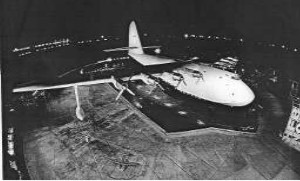
“The colossal Spruce Goose”
-The airplane designed by Howard Hughes that was known by the nickname Spruce Goose or Wood Goose, had eight Pratt & Whitney R-4360 engines.
-Like the B-36. As mentioned in the main text, due to policy between the American government and commercial struggles, the insufficient (for this case) R-4360 were installed instead of the more powerful Lycoming R-7755, for which reason four J-47 turbojets had to be added, of which we see clearly two of them in the below photograph, both on the right wing.
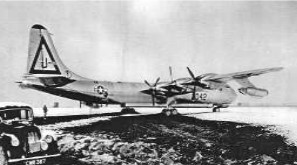
“B-36, SAC”
-On the Hughes, the R-4360 Wasp Major engines were tractors, while on the B-36 they were six pusher engines.

“R-4360 VDT scale model”
-The VDT versions are an example of the search for more powers that would already be unsuccessful because of the impulse brought by turbines.
-The R-2060 (previously mentioned) was a special engine with five blocks of four cylinders that were radially arranged. It was liquid cooled.
-It was designed around 1931 and it gave 1,116 HP. It did not go into production and absorbed many efforts and resources from the company.

“R-2060”
-The R-2270 was a 2,270 cu. in. engine that ran around 1930 and that was used for research and development. In fact it was built with existing parts from other engines.
-The X-1800 was an experimental 1,800 HP double crankshaft, H-24-type engine.
-It displaced 2,240 cu. in. Both this engine and its following derivatives, the X-3130 and the X-3730, were developed by Mr. Mead.
-The X-1800 was installed on the Northrop N2B. This engine was liquid-cooled. Although the engine did not reach formal production because it was cancelled in favor of those mentioned above.
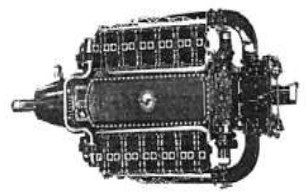
“X-3130”
-The X-3130 and XH-3130 were derivatives of the X-1800.
-The former was air-cooled, but the encountered problems directed it towards the liquid-cooled XH-3130.
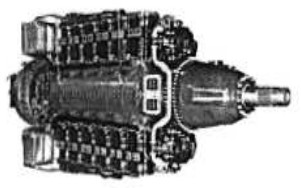
“H-3730”
The -3130s were literally based on the English McCollum-type slide valve engines.
-However, this engine gave way to a larger one, which was the H-3730 of the same H-24 type.
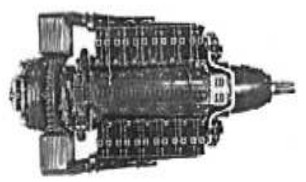
“H-3730”
-The X-3730 was an enlarged valveless version of the XH-3130 with sliding cylinders and a H-24 cylinder arrangement. It obtained 3,000 HP, with potential to reach 4,000 HP.
-Sometimes it is known as X-3730, as H-3730 and even as XH-3730. It differed at first glance from the X-3130 because it had two air-to-air intercoolers at the outlet of the superchargers.
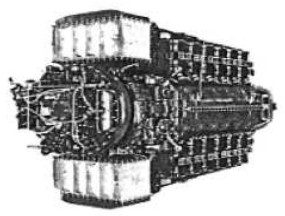
“H-3730”
-We come to the years 1946/1947 when Pratt & Whitney enters the turbine era.
-Although turbines have been studied by P&W since 1939. This was done in collaboration with the Massachusetts Institute or Technology from which the PT-1 emerged, a turboprop whose turbine was driven by eight gas generators (see Pescara) with free pistons, 2-stroke and Diesel.
-In 1945, the PT-2 was a larger, more conventional turboprop with the official designation T-34 for the Navy.
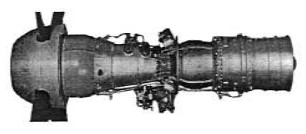
“T-34”
-The T-34 was in fact the first P&W turboprop. Known as PT-2, a large engine with an output power in the order of no less than 6,000 SHP.
-It was tested in the bow of a B-17 and as a propellant in a Lockheed L1248B (R7V-2 of the Navy).
-It started in 1945 with US Navy support. It had a 13-stage axial compressor, an annular combustion chamber and an axial, three-stage turbine. It had reduction gear for the propeller, with a ratio of 11 to 1.
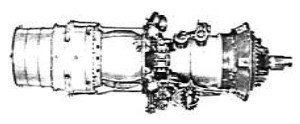
“T-34”
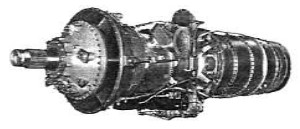
“Another T-34”
-The engine's de-icing system, as today, was produced by bleeding hot air from the compressor. Maximum power was given at 5,500 SHP to the propeller plus 1,250 lbf of thrust from the exhaust gas jet.
-Normal power was down to 4,750 SHP plus 1,125 lbf of thrust and 80% cruise was 3,800 SHP plus 875 lbf.
-It was installed on the C-133A as T-34-P3, on the C-124B as YT-34-P6 and on the YC-97J as YT-34-P5. By 1958 it reached 6,000 SHP and shortly thereafter 7,500 SHP.
-The PT2-F1 version became operational in 1953 delivering 5,600 SHP at 11,000 rpm.
-In the beginning, P&W built 130 Westinghouse J-30 engines, gaining experience.
-In the late 1940's, Grumman prepared the beautiful Panther, which would be followed by the Cougar.
-For these aircraft it was planned to obtain licenses for the RR Nene (which in the USA would be the J-42) and for the RR Tay which would be the J-48 and to which an afterburner would be adapted.
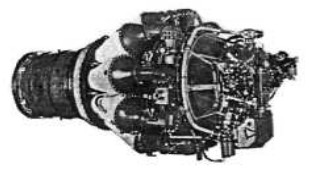
“P&W, J-42”
-Interestingly, the T-34 and the early Pratt & Whitney turbine engines were originally nicknamed "Turbo Wasp."

“P&W, J-48”
-It is assumed that this affectionate name would be given to them for being heirs of the successful family of radials Wasp, Wasp Junior, Twin Wasp, Double Wasp and Wasp Major.
-In several documents they are mentioned as “Turbo Wasp” apart from the T-34 (PT-2G), the J-42 and the JT3C (J-57). In turn, these would be heads of new turbine families.
-After WWII, P&W discontinued several lines of piston engines to dedicate itself to turbines. In 1954, turbines accounted for 55% of P & W's production.
-Canada's P&W soon entered that line. At first it only made the R-1340, but soon its first successful engines were the PT-6, JT-12 and JT-15.
-To date, P&W has collaborated and made alliances with other US and foreign factories for specific programs. For example, with Lycoming for the T-800 of the LHX. With Allison (now RR) for the propfan 578-DX. With Turbomeca and RR the RTM-322. With MTU the MTFE.
-Snecma and P&W-C for the SPW-14. With GE the “Engine Alliance” for the GP-7000 series.
-It granted licenses to the main European and Japanese brands, etc. Highlighting the RM-8 by the Swedish Viggen (J-52 = JT8D).
-Between this time and 1981, Pratt and Whitney gives them a new reference as J, JT, TF, JTF, etc. and which in turn receive the official designation of "T" for Turboprops, "J" for pure jets, "RL" for liquid rockets. From that year on, the military “F” and the civil “PW” appeared, in addition to the Canadian “PWC”. "PJ" and "RJ" for pulses and ramjets, like the P&W RJ-40 ".
-A short comparative list of civil engines and their equivalent military designation would be:
| Civil | Military |
| -RR-Nene | -J-42 |
| -RR Tay | -J-48 |
| -JT8-D | -J-52 |
| -JT3-C | -J-57 |
| -JT3-D | -TF-33 |
| -JT4 | -J-75 |
| -JT-11 | -J-58 |
| -JT-12 | -J-60 |
| -JT-9 | -J-91 |
| -JTFD-12 | -T-73 |
| -PT2-G | -T-34 |
| -PT5 | -T-57 |
| -PT6 | -T-74 |
| -PT6-T | -T-400 |
-The J-42 was the RR-Nene manufactured under license. It had a double-sided centrifugal compressor. The first came off P&W in 1948 ready to be fitted to the Grumman Panther F9F.

“J-42 schematic”
-The thrust was 5,750 lbf, and it was known as Turbo Wasp.
-The Rolls-Royce Tay was also built by Pratt & Whitney under license and identified as J-48. At RR, the Tay was a development of the Nene and was built because a more powerful engine was already required for the Grumman Cougar. The compressor was bigger and the turbine had longer blades, all to give a 30% higher air flow. However, externally the engine was almost the same size as the Nene, which made it noticeably interchangeable.

“J-48, with afterburner”
-P&W developed an afterburner system for the J-48. Takeoff power was already 7,250 lbf.
-This engine was also installed on the F-94C. Chrysler obtained the license to manufacture the J-48.
-After the T-34, the next turboprop was the XT-45 known within P&W as PT-4. It had two shafts and ran in 1948. It was an engine derived from the XT-176 project and which in turn derived towards the JT3 turbojet (X-184 project) and of which its military version was the J-57.
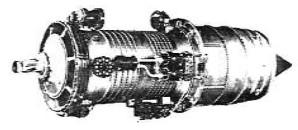
“XT-45”
-The XT-45 gave a poor result and did not prosper. The experience continued with the JT3.
-The JT3 as a derivative of the XT-45 was already a turbojet and eliminated the front gearbox, as can be seen in the X-176 project.
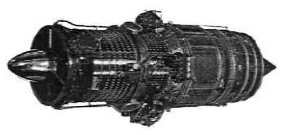
“X-176”
-The JT3-A was the X-185 project, it was completed in 1950 and as we see in the illustration, the J-48's afterburning equipment was installed, at least initially.
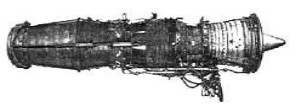
“JT3-A, with afterburner”
-At that time the JT3-A gave almost 10,000 lbf dry and about 15,000 lbf with afterburner. It was tested on the B-50. These projects were targeting the new B-707 and DC-8 commercial jets.

“JT3-C6”
-The JT3-C was originally also known as the Turbo Wasp. The JT3-C version that came from the XT-45 and the JT3-A, was already identified as J-57 in the military code.
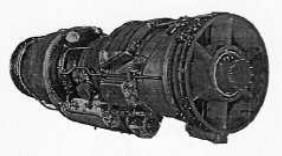
“J-57”
-In the civil version, the turbojets for the Boeing 707-100 and B-720 as well as the Douglas DC-8 were ready to be installed at the time.
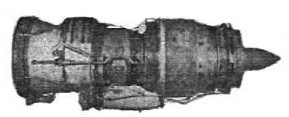
“J-57, side view”
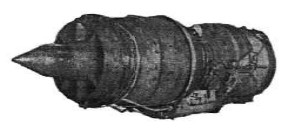
"J-57, seen from the exhaust"
-From a French publication (Les Ailes) are the two above illustrations, corresponding to the initial period of the J-57.
-The J-57 had its own afterburner system as we can see in the illustration below.
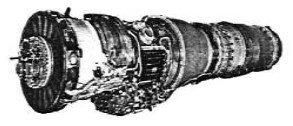
“J-57 with afterburner”
-It had a variable outlet nozzle. Dry it was in the 10,000 lbf class. The J-57 was the great engine on the first B-52s, the F-100, F-101, F4D-1, etc.


“XT-57 vs J-57 comparison”


“From another angle”
-The similarity between the XT-57 and the J-57 is evident. The engine does not vary except for the nozzle and for having gear for the propeller.
-The base with which the turboprop was built does not present the slightest doubt. It delivered 15,000 SHP, and it was known at P&W as the PT-5.
-Although there are no known practical applications, it would be the western equivalent of the 10,000 SHP Kuznetsov (NK-12), although this one did proliferate in Russian aviation.

“JT3D-1”
-The JT3D-1 (military TF-33) was the one that was installed on the new B-707 and DC-8 in 1958.
-It was a pioneering turbofan and almost 9,000 engines had been built at the time of production shutdown, including all JT3D variants.
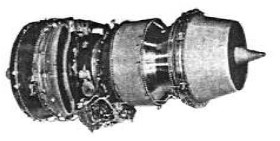
“JT3D-1, rear view”

“TF-33P-7, angled front view”
-It was derived from the JT3D. The TF-33 was a turbofan, still not very high ratio compared to the current ones (see JT9 for example). The TF-33P-7 version shown delivers 21,000 lbf of thrust that is 9,525 Kgf.
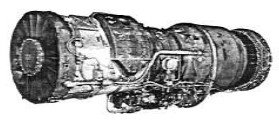
“JT-4 = J-75”
-The TF-33s were thus derived from the JT3D, while the J-57s were derived from the JT3C.
-The next engine was the JT4 with military designation J-75. The JT4-A3 version was the one that was mounted on the intercontinental aircraft B-707-400 and the following DC-8.

“J-75 with afterburner”
-It delivered 6,800 Kgf of thrust. The for military used J-75 version with afterburner is seen above.

“JT8D-15” (PiP)
-The JT8D was announced in 1958.
-The JT8D turbofan had its military replica as J-52. The JT8D-15 gave 15,500 lbf of thrust.
-The civilian models with 14,500 lbf were already on the B-727, Douglas DC-9 and Super Caravelle, as well as on the first B-737, that is, the airplanes that the main companies in the world were using.

“JT8D-200, cutaway”
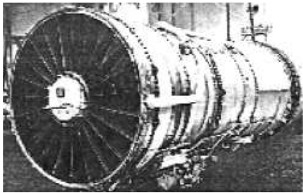
“JT8D-209”
-The J-57 and J-75 turbines, which in turn were derived from the JT3 and TF-33, gave way to the J-52.

“J-52P-408”
-However, the J-52 started out specifically military, destined for the Douglas A4D and other USAF and US Navy aircraft. The J-52 gave 3,850/5,080 Kgf.

“J-52, another view”
-The RM-8 (JT8D) built in Sweden by Volvo for Viggen aircraft gave 9,000 lbf dry and 11,250 lbf with afterburner.
-The JT9D has been a large turbofan that with an initial 43,500 lbf was installed on the Boeing 747 “Jumbo”, DC-10 and on the Airbus.

“JT9A-20”
-The experiences on the JT9A-20 (J-91-P1) would give way to the commercial JT9D.
-As a civil engine it made its first flight in 1968 and on the 747 in 1969.
-Different engines like the -7 exceed 50,000 lbf of thrust, reaching 56,000 lbf with the JT9D-7R4H.
-Making an aside, from the beginning of its career as project X-287 and X-291, versions for bombers were made using special fuels. There were also studies for nuclear versions. The JTN9 was the unbuilt version of the J-91 (civilian JT9D).

“JT9D-7A”
-The JT9D-3A from 1970 gave 45,000 lbf (on the 747-100 and 200B). Of all the JT9D versions more than 3,500 engines have been built.
-The first JT9D-7A as shown gave 47,670 lbf and the JT9D-20, 49,400 lbf.
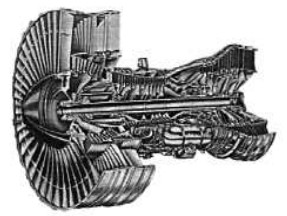
“JT9D-7R4”
-We can see a cutaway of the JT9D-7R4, which was mounted on the Boeing 767, A-310, following 747, A300B-600, etc.
-The JT10D was designed for the decade of the 80's, with great fuel economy, low noise and low emission of smoke in the exhaust gases.
-The thrust started with 11,000 Kgf with potential for 16,000 Kgf. They were manufactured in collaboration with MTU and Fiat.
-It was a not very well known engine, but later it served as the basis for the PW-2037. The JT10D-232 gave 32,000 lbf of thrust.
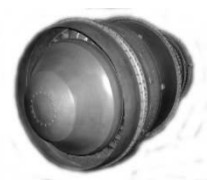
“JT10D, rear view”
-We move on to the JT11, with its military version the J-58. They were extraordinary engines that have been installed on the Black Bird SR-71 and A-12 to launch them at speeds of Mach 3.35.
-They were built with special materials, supersonic compressor and using special fuels, starting with JP-7.

“YJ-58, right side”
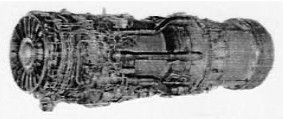
“YJ-58, left side”
-The Blackbird SR-71 aircraft uses the special Pratt & Whitney J-58 engine as shown below.

“P&W, J-58”
-Now, the merit of reaching high Mach numbers also goes to the system that was designed by Lockheed for the intake and exhaust ducts, the fairings, as well as its deflection attachments for flow and shock waves that occur at speeds higher than 3,000 km/hr.

“Four circumstances vs. velocity ”
-Position and flows of the J-58 on the SR-71 Blackbird, the “Bizarre Machine”, its popular “aka”.
-The engines were derived from the J-58 and specifically identified as YF-58 for use in those "bizarre" machines.

“TF30-P100”
-The TF30 was mounted on the F-111, although the first engines that were mounted were the JTF10A.
-A TF30-P3 could deliver 10,750 lbf and 18,500 lbf with afterburner. The next engine to be installed on the F-111 was the TF30-P100, which already reached 25,000 lbf.
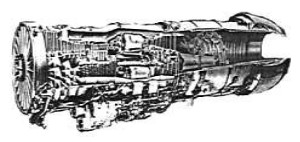
“TF30-P414A”
-For the F-14A “Tomcat” the first version was the TF30-P412 and finally the P414A, although it seems that they were a source of continuous problems. Later F-14s were powered by GE engines.
-The TF-22s were the next generation of engines later known as F-100 (the F-100-PW100 is the JTF22A-25A), and in turn they were derived from the PW-1115, PW-1120, even the PW-1130 for the F-100EMD version.
-Between 1976 and 1981, Pratt & Whitney underwent a remodeling in all its factories and started a new line of engines known by the military designations F-100, F-401, etc.
-And also civilian engines such as PW-1000, PW-2000, PW-3000, 4000, 5000, 6000, 7000 and 8000 series that were appearing until today.
-Making an aside, a line of industrial engines such as the GG (Gas Generators) had appeared.
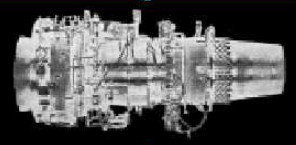
“P&W, GG” (PeT)
-The GG3C and GG12A are also common.
-Before continuing with the F and PW series, we will mention that tests and experiments were carried out with special engines that worked with high-energy fuels such as hydrogen, liquid oxygen and exotic fuels such as Boron.

“P&W, Suntan”
-Shown above the Suntan project, which was carried out with great secrecy in East Hartford.
-Liquid hydrogen was pumped into a combustion chamber where it expanded and made spin a multiple turbine that drove a multi-stage fan.
-The same hydrogen passed to the main chambers and a part of it went to the afterburner.
-The X-304 project corresponds to this type of engines that ran on hydrogen. This was in the year 1958.
-It had a 5-stage fan, with reduction gear and a hydrogen turbine with 18 stages.
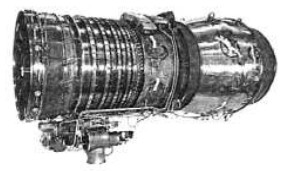
“X-304”
-A nuclear project like the one mentioned above has a reactor where high pressure air is generated. This makes spin the turbine that drives the fan, then the air returns to the nuclear reactor to repeat the cycle.
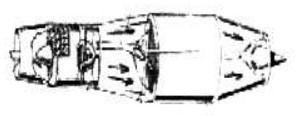
“P&W, nuclear” (drawing)
-In parallel, Pratt & Whitney in Canada manufactures a wide variety of engines for General Aviation (see PWC).
-After this parenthesis, we return here to the engine descriptions, with the "F" for the military and "PW" for the civilians, (generally).
-The letter F is used to designate Fighter aircraft but there is still another element of confusion: being a military designation they are used for all engines of the different brands, correlative to their appearance. Sometimes with the same number as the P&W and GE F-100s.
-We must pay attention to the following “Dash Numbers”, since the F-100-PW-229 is from Pratt and Whitney while the F-100-GE-129 is from General Electric.

“F-100-PW-100”
-The F-100-PW-100 flew for the first time on the F-16 and F-15, it gave 24,000 lbf of thrust with afterburner.
-The F-100 series was the derivative of the JTF-22 and in turn it was the basis for the PW-1000 series, that is, the 15,000-lbf PW-1115.
-And also for the PW-1120, the PW-1128N, PW-1129, the latter being the F-100-PW-229.
-For example, the F-100 equivalents of the PW-1120 were on the Israeli Phantoms.

“PW (F)-100-PW-100”
The -100 series was followed by the -200, with single-lever “Back-up” fuel control systems to free the pilot from constant attention to the engine.
-The F-100-PW-220 was mounted on the F-15C and F-16C, in 1987.

“F-100-PW-220”
-The F-100-PW229, intended primarily for the Tomcat F-14, did not stop giving problems as already mentioned. We will see a cutaway of it below.

“F-100-PW-229”
-The -PW-229 features a three-stage fan, a 10-stage compressor, and annular combustion chamber.
-It had a 2-stage HP turbine and a two-stage LP turbine and afterburner. It delivered 15,000 lbf of dry thrust and 23,500 with afterburner.
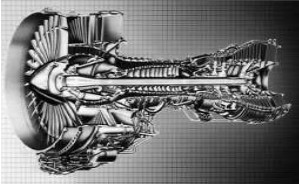
“F-117”
-The F-117 military designation, is a large turbofan. In fact they are the military equivalents of the commercial PW-2000 series.
-The first tests were made in 1988. The first engine was delivered the following year and was installed on the Douglas C-117.

“F-117”
-It delivered 37,600 lbf of thrust with a "by-pass" ratio of 5.9 to 1 and a pressure ratio of 27 to 1. The diameter of the engine is 2.15 meters and the length is almost 4 meters.
-Those shown are F-117-PW-100 being the civil equivalent the PW-2037.
-The F-119, is another "F" that is used in the USAF F-22 vector thrust aircraft, it was the YF119-PW-100L engine in its trial period.
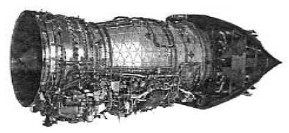
“F-119”
-In the 1980's, the YF-119 prototype was developed to meet the requirements of a validation and demonstration program for an advanced tactical fighter.
-In fact there were two of them in the form of prototypes, the Boeing/General Dynamics and Lockheed with the YF-22, and the Northrop/McDonnell-Douglas with the YF-23.
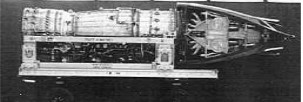
“YF-119”
-There were two other versions, one for each new model of air superiority aircraft. They are vector thrust or ASTOVL system aircraft. Both engines had the generic designation of JSF-119 (Joint Strike Fighter).
-The first variant, the SE611S had a total thrust of 41,000 lbf approx. This engine also drives a vertical fan and was destined for the Lockheed-Martin X-35B.
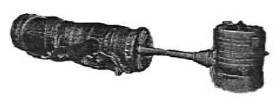
“JSF-119-SE611S”
-The SE614S variant was for the Boeing X-32B model with adjustable nozzles (see the YF-119).
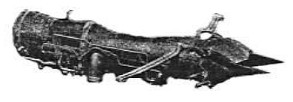
“JSF-119-SE614S”
-The main jet can go straight, up and down. It has steerable nozzles for the bypass jet (towards the middle of the engine) and also some poles with propulsion outlets in order to influence the aircraft's trajectory and balance.
-For example the total of almost 41,000 lbf is divided into the thrust by 18,000 for the main nozzle, 15,000 lbf for the medium nozzles and 4,000 lbf for the control jets.
-Other engines such as the F-135 of the PW-100 series were for conventional F-35s. The F-135-PW-400 went onboard the F35C. Or the F-135-PW-600 for the F-35B in STOL version.

"F-135"
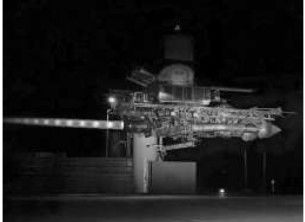
“Testing the F-135”
-Undoubtedly, new “F” engines are developed like the F-401-PW-100. They will be included as their information is obtained.
-Now we go for the PW-1000, whose series began with the PW-1115. They were derived from the F-100s.
-This engine was a 12,500-15,000 lbf turbofan for attack and training aircraft, both subsonic.

“PW-1120”
-The PW-1120 turbojet was predicted to deliver 20,000 lbf of thrust before its maiden flight in 1984. The hot section was from the F-100. It had an afterburner and was fitted with DEEC (Digital Electronic Engine Control), the predecessor of the FADEC system. It can be said that 70% of the engine is identical to the F-100.
-Production started in 1987.
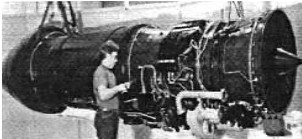
“PW-1120N”
-The prototype of the PW-1120N is shown, It gave 28,000 lbf of maximum thrust. This prototype was installed on a US Navy F-14. However, the structural modifications that were necessary for the aircraft to house this engine were the reason to maintain the TF-30 with 21.000 lbf.
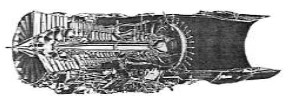
“PW-1129”
-At the time it was considered a new generation to replace the engines on the F-15 and F-16. It had components from the F-100-PW-220 and the PW-1128. Thrust was 29,000 lbs maximum at takeoff with afterburner.
-This engine was the predecessor of the F-119, which we have already mentioned and that was a candidate for the ATF (Advanced Tactical Fighter), in the 1990's.
-The F-401s, like the F-100 were military designations for the JTF22. The F-401-PW-400 (JTF22-A25A) went on the F-14A and Grumman Tomcat F-14B.
-The PW-1130 was a 30,000 lbf turbofan that was interchangeable with the F-100.
-The PW-2000 series were turbofans in the 20 to 40 thousand lbf category. They were intended for transport and bomber aircraft. The first member of this family is the PW-2037, which came out in 1982 for use by airlines as well.
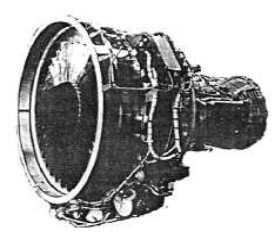
“PW-2037”
-In fact, the PW-2000s were previously designated JT10D, considered third generation turbofans with double shaft, axial flow, and a high bypass ratio turbofan.
-The 2037 delivered 38,250 lbf of thrust while its derivative PW-2040 went to 41,700 lbf.
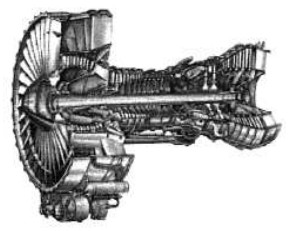
“PW-2037”
-They were installed on the Boeing B-757 and the Russian IL-96M. Due to the specialization of its installation, the PW-2037 for passenger aircraft had the ETOPS (Extended Range Twin Engine Operations) qualification for 180 minutes of flight under the required conditions. The PW-2340s were intended for cargo versions.
-The PW3000s are turboprops, turboshafts and possible turbofans from 4,000 SHP, saving 30% of fuel. They are versatile for their easy conversion.

“PW-3005”
-They were announced in 1981, and the first member of this family appears as the PW-3005 in 1983, a 6,700 SHP turboshaft.
-It could be used as turboshaft and turboprop. This engine was intended for the Osprey V-25 with vertical take-off.

“PW-3005”
-But it was not only intended for the Osprey, because like many other engines in its category it intends to replace others as it is considered more modern, with less consumption, etc. The CH-47 Chinook was also in their sights.
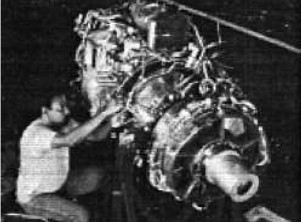
“PW-3005”
-The PW-4000 family is very extensive. They are a mix of the JT9D and the PW-2037. They had thousands of smaller parts less than the JT9D, which makes parts storage and maintenance easier.
-We saw the PW-4052 and PW-4060 on the B-747-400, 767-200, -200ER, -300 and 300ER. They delivered 52,200 and 60,000 lbf respectively.

“PW-4000”
-The PW-4084 that gave 84,000 lbf was intended for the B-777, and the PW-4090 version for this same aircraft. It was planned for 90,000 lbf. And the PW-4098 gave 98,000 lbf of thrust with a 2.845 meter diameter fan !! (112 inch models).
-They have been manufactured in various types and sizes as we have already mentioned. All were really large, with quite important variants among them as we can see between the basic version and the PW-4084, for example, with a larger LP and Fan compressor as well as a turbine with more stages.

“PW-4000 vs -4084”
-In the normal group of 94 inches of fan diameter (2.28 mts) are the PW-4052 and PW-4152, the PW-4056 and PW-4156A, -4256, -4158, -4358, 4060, 4360, 4460 , 4062 or -4462. In most of the cases the last two figures match the thousands of thrust pounds.
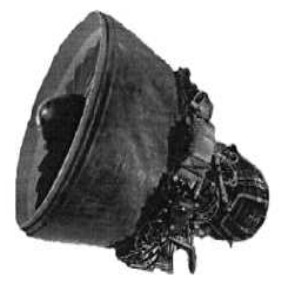
“PW-4090 perspective”
-For example the PW-4068 gives 68,000 lbf of thrust for the Airbus A330.
-The PW-5000 series, military designation F-119, was the engine designed for the ATFs with persistent supersonic speeds without the need for an afterburner. It has a high percentage of pieces less than its congeners, in the order of 40%.

“PW-5000”
-Its main characteristic is that it has a nozzle that can be adjusted up or down according to the need for vector combat, said colloquially, a 2D nozzle or so: two-dimensional.
-We now turn to the PW-6000. They are quite smaller than the previous ones, newly designed and with the intention of replacing the JT8Ds and giving new life to aircraft such as the B-737 and DC-9.

“PW-6000”
-First they built the 6020 and -6021 versions with 20,000 and 21,000 lbf of thrust.
-The PW-7000 is hardly known. We do not want to confuse it with the GP-7000 because, as we will see, they have a very high thrust for A-380 type aircraft, while the reference for this series is in the area of 35,000 lbs. Another reference is the XTE-66.
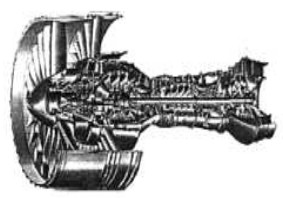
“PW-8000”
The PW-8000 with a very high Bypass ratio (10: 1) was presented at Farnborough in 1998. The engine is revolutionary since the turbine does not drive the fan directly, but rather through a gear coupling that makes the fan rotate three times slower than the turbine.
-It generates the same thrust as another equivalent but the noise is much lower while the turbine obtains greater performance at high speeds with a smaller number of stages.
-A Pratt and Whitney consortium with Fiat Avio and MTU was created for this engine. The intention is that 30,000 hours can be flown without doing a general overhaul. It is estimated to deliver 25,000/35,000 lbf of thrust.
-We have seen the collaboration of P&W with other companies, well, with MTU it also makes the MTFE, a turbofan of 20,000 lbf.
-Another example of collaboration is the Engine Alliance (see). Sometimes known simply as the Alliance. This alliance, of which the GP-7000 family engines are the product, was made between General-Electric and Pratt & Whitney.
-These were huge engines destined for the Airbus A-380 and future Boeing aircraft. They are expected to reach 100,000 lbf.
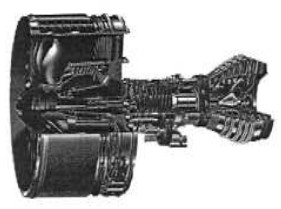
“Engine Alliance GP-7200”
-In fact, it is a family of engines in which each factory contributes the best and greatest of its production.
-General Electric with its GE-90 and P&W provides its PW-4000 range.
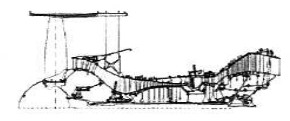
“PW-7176”
-Pratt & Whitney collaborates with International Aero Engines (see) for the production of the V2500 of which more than 2000 engines have already been made in different series such as the V2500-A1, V2522-A5, V2524-A5, V2527-A5, V2530- A5, V2533-A5, V2525-D5 and the V2528-D5. To the Airbus A-310, A-320, A-321 and the Boeing MD-90.
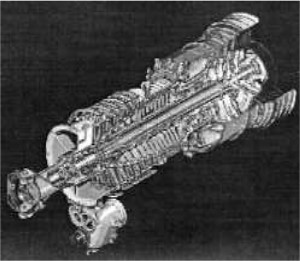
“Allison G-T/P&W, T-406”
-Another specific collaboration has been that of Allison Gas Turbine with Pratt & Whitney for the T-406-AD-400.
-This was an advanced engine for the US Navy's Osprey V-22, a tiltrotor aircraft.
-It is of the order of 6,000 SHP, with a maximum power of 6,150 SHP.
-Another collaboration is the one with AVCO Lycoming for the T-800. With this well-known engine brand, the aforementioned 1,200 SHP T-800-APW-800 was built for the LHX or light experimental helicopter of the US Army.
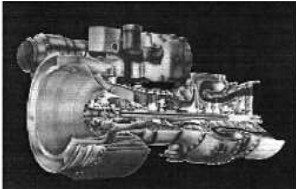
“Avco-Lyc./ P&W, T-800”
-It has a mixed compressor, first axial and then centrifugal, and a reverse flow combustion chamber. There is a two-stage turbine for the gas generator and a two-stage power turbine.
-We already know the collaborations with other countries such as the Swedish Flygmotor-Volvo.
-In recent years the P&W logo for turbines has shared space with the one below, less "romantic".

“New logo”
-A series of well-known P&W engine cross-sections are now available.
-We start with that of the JT3D, of the order of 93 kN, using the gas generator from the J-57. It was mounted on the B-707, B-720, DC-8 aircraft, and the TF-33 military version on the C-141, B-52, C-135. Mainly the JT3D-1, JT3D-3B and JTD-7 were made.
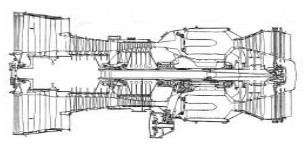
“JT3D”
-The JT8D that was built in collaboration with MTU, Volvo and Mitsubishi with a thrust from 82 to 93 kN was initially used on the MD-81, 82, 83 and 87. On the remotorized B-727, only the side ones.

“JT8D”
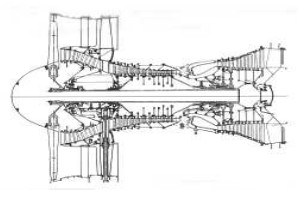
“JT9D”
-Since 1970, the undoubtedly successful JT9D with 250 kN was mounted on the B-747, A-300, A-310, B-767, DC-10 and the Galaxy C5A.
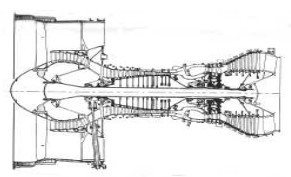
“PW2000”
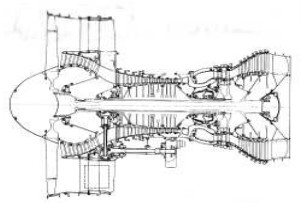
“PW4000”

“Half PW-6000”
-The PW2000s are made by P&W with the participation of MTU, Fiat and Volvo. They are intended for the B757, C-17 and IL-96M. There are the PW2037, 2040, 2337, 2043 series, with 170 kN of thrust.
-The PW4000-94 versions were an intention of succeeding the JT9D.
-The 4000-100 engines are made with MTU and MHI.
-In the PW4000-112 project, Volvo also intervenes. These engines gave between 230 and 380 kN of thrust.
-Derivatives of the JTF16 and 22 are the F-100, series 100, 200 or 220. They delivered 106 kN. Military versions are used on the F-15 and F-16.

“F-100, with afterburner”
-From the JT8D the J52 has been derived with less than 50 kN of thrust. From this engine would come the PW1212 and its derivative with afterburner, the PW1216.
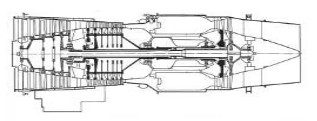
“J52”

“TF30”
-The TF30 (112 kN) has a derivative by the Snecma TF104. This engine was intended the F-111, F14A and A-7.

“F119”
-The F119 was intended for the JSF and F22. This engine is in the order of 156 kN or in the 35,000 lbf class.
-Pratt & Whitney's latest generation turbofans (year 2008) have a geared fan. This is the case of the GTF (Geared Turbo Fan) that we see below.

“GTF computer illustration”
-And schematically, the situation of the gearbox is sandwiched between the LP shaft and the fan.
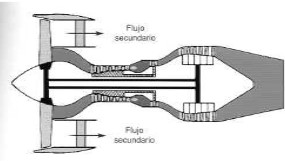
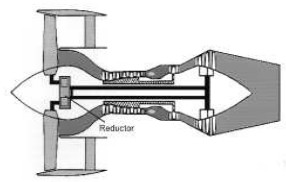
“GTF engine drawings appeared in Itavia magazine”
-It shows us a normal ungeared fan and a geared one. The input and output shafts of the gearbox are in the same plane, for this the gearbox is of the planetary and satellite type (in other words with a sun gear and five satellites).

“Gear assembly”
-We come to another type of P&W engine that is very little known in the aeronautical field, that of rocket engine propulsion.
-Undoubtedly P & W's best-known rocket engine is the LR115, which is officially called the RL-10. There are many variants of this engine such as the RL-10A-1, RL-10A-3, RL-10A-4, -10A-5, -10B-2, -10Bx, -C, -Cx, or the RL-50 equivalent to -10x.
-They run on liquid fuel such as LOX (liquid oxygen) and LH2 (liquid hydrogen).
-Hence the name LR or RL, from Liquid Rocket or Rocket Liquid.

“RL-10”
-It is an engine of remarkable success from the year 1958. First it was destined for the Viking and Centaur, and it was normally used in upper stages of Atlas, Titan and on the Saturn rockets. The evolution with the altitude has gone towards increasing the nozzle size as we see in the -10A-4. with 22300 lbf of thrust.

“RL-10A-4-1 y -2” (PiP)
-They were used for satellite launches such as Eutelsat, Echostar, Intelsat, Galaxy, Milstar, etc.
-These engines were of regular size, as we can see it compared to the height of a person next to it. It's the RL-10A-3.
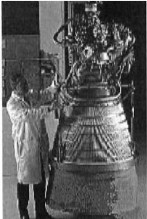
“On the Lockheed-Martin”
-As we see, it is being prepared to be installed on a launcher. Below we see still a larger nozzle, around the year 2000.
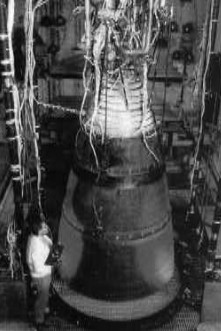
“RL-10 with high nozzle”
-The shown engine is that of the Delta 3 for its second stage. It is the P&W RL-10B-2 with virtually the same components as the RL-10A-4 used on the Atlas 2AS. The performance of the engine is increased by the added large nozzle.

"Comparison of both engines"
-An engine that did not prosper was the LR-129 with the same fuels as the previous one. It was the competitor for powering the Space Shuttle.
-In the year 1988 the Martin Titan 5's main engine was the P&W 1,000,000 lbf/LH2 running on LOX/LH2. It delivered 454,500 Kgf for 420 seconds.
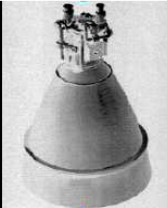
“RL-60” (PiP)
-Another engine with the same fuels and 60,000 lbf of thrust is the RL-60 that P&W jointly develops with Volvo. Similar in size to the RL-10 but with twice the power. It is still in development.

“RL-60, complete”
-The Cobra engine is made in conjunction with Aerojet, for a thrust of 200,000 to 1,000,000 lbf with the same cryogenic fuels as above.
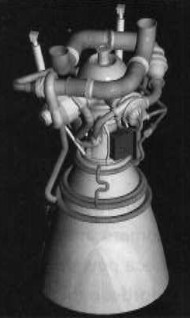
“P&W, Cobra”
-Thought of being used several times (more than 100 missions), it has a reliability index of 0.999995 and the possibility that it will stop is also 0.9995. The fuel mix ratio is 6 to 1 approx.
- Curiously, P&W offers together with the Russian NPO Energomash, the RD-180 engine a two-chamber engine derived from the Russian RD-170 four-chamber engine. Both run on LOX/Kerosene giving 10% more power than their American equivalents.
-It was destined for the Lockheed-Martin Atlas III and V. The other partner of this Joint Venture was RD-Amross.
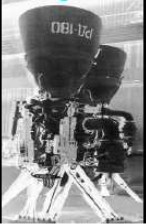
“P&W, RD-180” (PiP)

“P&W, RD-180 on the Atlas V”
-Another engine product of the collaboration with Russia is the RD-0146. In this case it is with CADB of Voronezh, that is, the Chemiautomatics Design Bureau.
-It gave 22,000 lbf of thrust with an engine weight of only 534 lbs.
-It runs on LOX/LH2 with a 6 to 1 mix ratio. It could be used for multiple starts.

“RD-0146”
-At the Space Propulsion Division of P&W in San José, California a solid rocket engine of the so-called “Booster” has been developed. It is the Mk-72 with four-nozzle thrust vector control derived from the previous Mk-41.
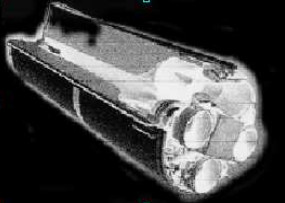
“Mk-72” (PiP)
-Another solid fuel booster engine is the one used for separating the two main solid rockets of the Space Shuttle launcher.
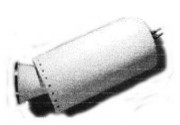
"Separation booster"
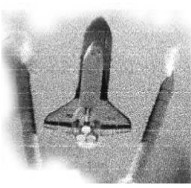
“Moment of separation”
-The Orbus 1 is a solid fuel rocket engine used in the upper stages of carrier vehicles as well as apogee for satellites. It delivers 7,000 lbf of thrust.

“Orbus 1”
-The RLX that is built in conjunction with Aerojet delivers a medium thrust between 100,000 and 300,000 lbf.

“RLX”
-The THAAD missile uses a solid fuel engine with a TVA (Thrust Vector Actuation) gimballed nozzle. P&W is acting as a Lockheed Martin subcontractor for the US Army.
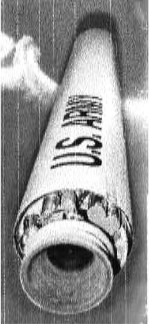
“THAAD”
-P & W's Space Propulsion acquired Space Power Inc., which had already developed propulsion systems for space navigation. These engines were based on the Hall effect.
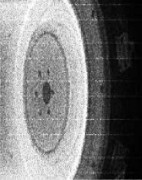
“P&W ion thruster”
-There are several models: the T-40 with 5 to 20 mN of thrust, the T-140 with 160 to 350 mN and the T-220 (-T and -HT) with up to 1 N of thrust.
From Appendix 6: We located a photograph of the J-58 engine when it was in its experimental stage and was known then as XJ58-P-1.
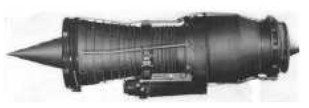
“Pratt & Whitney XJ58-P-1”
-In this photograph it appears more “naked” compared to the definitive J-58 that would equip the SR-71. The engine is capable of exceeding 2 Mach.
-The current Turbofan PW1000G or PW1217G are also known as “Purepower”.
-Below a comparison of the frontal area between two colossi of Pratt & Whitney, the experimental 24-cylinder H-3730 in H and the more prolific R-4360. Both in the area of 3,000 HP to easily reach 4,000 HP. With the arrival of the turbines their developments were cut off.

“The 24-cylinder H and the 28-cylinder radial (7x4)”
-In the Pratt & Whitney Canada (PWC) chapter, the PT-1 is mentioned. This was the brand's first turboprop, designed and built in the early 1940's but with the gas-generation by free pistons as described in the main text.
-Maybe it was the last water-cooled engine of the brand. It is clear that the design was made at the USA headquarters. We now have an image of the PT-1.
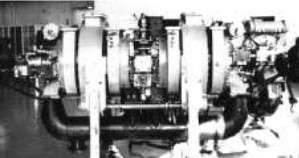
“The PT-1 at the Pratt & Whitney museum”
-At the Pratt & Whitney Museum there is also a display in which you can see the mechanism of this free-piston, gas-generator engine to drive a turbine.

"Engine model for instructive uses"
-Below we see the assembly with the propeller shaft above the engine.

"Attempt to enlarge"
-Thanks to Kimble McCutcheon, President of AEHS, we have new photos of the latest Pratt and Whitney brand piston engines.
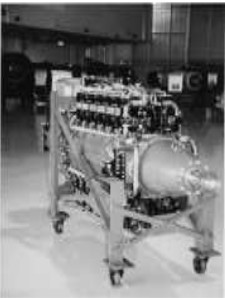
“XH-2600”
-The XH-2600 was also known as the 24-cylinder water-cooled X-1800 for the US Army Air Corps. The XH-3730, also a 24-cylinder, was for the US Navy.
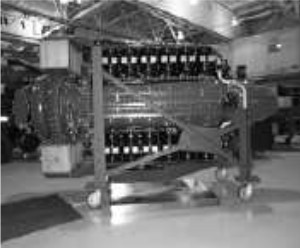
“XH-3730”
-An interesting photograph is that of the “mother” or “master” cranks that were used in the series A, A / B, C and E, radial.
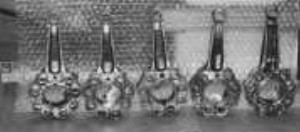
"Pratt & Whitney connecting rods"
-The rare R-2180 or Twin Hornet from 1938 would be replaced by the R-2800.
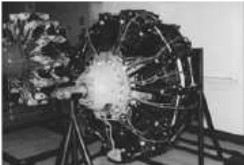
“R-2180”
-In 1949, the R-2180E with R-4360 components appeared.

“R-2270”
-The R-2270 was the first double row P&W in the early 1930's. It had components from the Hornet and the Wasp.

“R-1535”
-Finally the rare R-1535. All the photos on this page have been taken at the P&W Museum.
-A better picture of the PW3005 is shown below.

“Pratt & Whitney PW3005 turboshaft”
-We obtained a photo of the PW1120 turbojet as it was shown at the Paris Air Show in 1981.

“P&W 1120”
-And a diagram of the PW200, a step forward of the PT6 made in Canada by the same brand. Generally mounted two by two (Twin Pack). Actually it should be PWC200 as the Canadian subsidiary is its main designer.

"PW200 with power output below"
-And a new photograph of the PW200 that was built by the Canadian division.
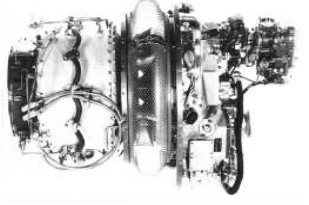
“PW-200”
-For the DC-X module project, Pratt & Whitney made a variant of the RL-10 cryogenic engine.
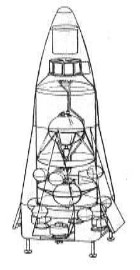
“DC-X”
-The RL-10 engine they choose, was the RL-10-A5 with variable power (throttleable). between 4,400 lbf of thrust up to 14,750 lbf.
-In the illustration below, we see an RL-10 of a Centaur next to that of the DC-X, although the latter without the high nozzle.

“RL-10 for the Centaur and for the DC-X”
-Inherited from Rocketdyne, there was the SSME, or Space Shuttle Main Engine, which now appears as P&W.
-It ran on LOX and Hydrogen and is shown below in static operation tests.

“Pratt & Whitney SSME”

“Better photo of the RL-10”
-Here an interesting photo of the four P&W aces of the radial piston engine age: George Mead, Frederick Rentshler, Don Brown and William Willgoos. (see main text).
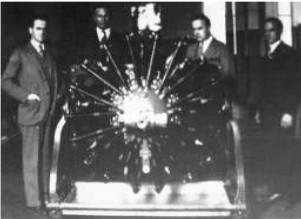
“Four P&W top engineers”
As is known, during WWII Pratt & Whitney engines were made under license by other automobile and engine manufacturers in the war effort.
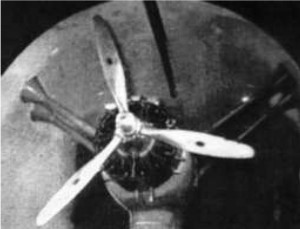
“Pratt & Whitney by Buick”
-Buick assembled a special production line, as well as the test bench that we see in the above illustration. It is a bomber engine.
-Similarly, in the photo below we have another bench from the Dodge factory for the B-29 engines.
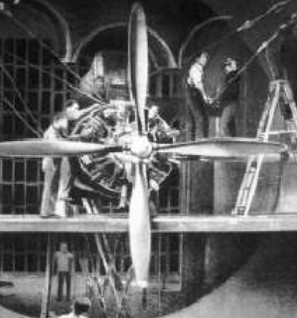
"Dodge test bench"
-At a recent Paris Air Show, the F-119 variant for the Lockheed-Martin X-35B aircraft, the JSF-119 vector thrust engine, was shown at Le Bourget.
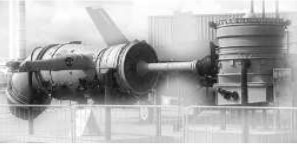
“Joint Strike Fighter X-35B engine”
-In this photograph we can clearly see the balancing pole on the right side, repeated on the left side, but not visible, and the large detachable vertical front fan, as well as the tail nozzle directed downwards. It is a VSTOL aircraft.
-And now a recent photograph of the Prop-Fan built by the Pratt & Whitney Joint-Venture with Allison.
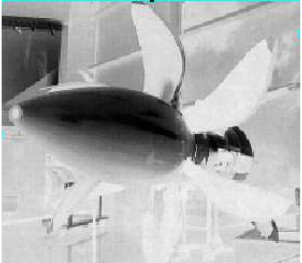
“Prop-Fan by P&W and Allison” (PiP)
-We can expand the information on the engines that appear as “Suntan” in the main text and in the P&W chapter.
-It runs on liquid hydrogen that passes from the tank to the regenerative nozzle to gasify it and from there to the turbine that is connected to the geared air fan and then to afterburner. See the diagram below.
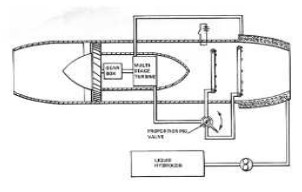
“PW-304 theorical schematic”
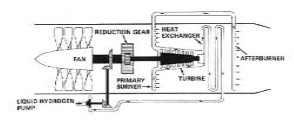
"More realistic drawing of the 304 principle"
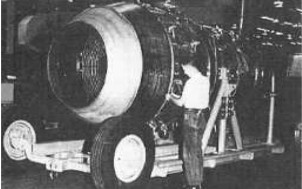
“Finally, the Pratt & Whitney 304”
-In 1956, the principle was applied to the existing J-57, suitably modified to run on hydrogen.
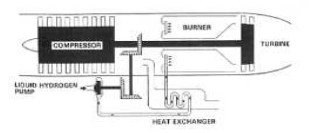
“Previous test on the J-57”
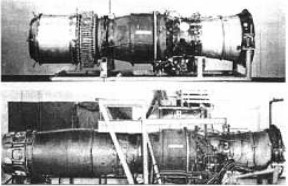
"Differences between a tested J-57 and a normal one"
-In the photo above the modified J-57 to run on liquid hydrogen and below the normal J-57 with the afterburner nozzle.
-A clearer photo of the ST6 has been received allowing to distinguish the engine architecture. (See also PWC).

“Pratt & Whitney ST6-771”
-The J-58 in new illustrations.
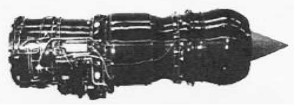
“YJ-58”

“J-58-P2”

“J-59-P2”

“J-58 for Mach 2.5/3”
-We also show several cutaway versions of the Turbofan F-100. They were mounted on F-15 and F-16 fighters.
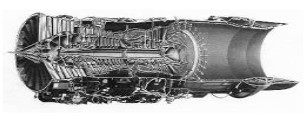
“P&W F100-PW-229”

“P&W F100-PW-232”

“P&W F100-200”

“P&W F100-PW-220 and -220E”
-Following the trend of reducing consumption and smoke emission, this American brand has developed the PW-1000 model G that complies with a lower consumption in the order of 15% and a reduction of harmful gases by 50%.

“PW-1000G”
-It is scheduled to enter service in 2013. It is intended for the new Airbus aircraft the A-320neo, the Bombardier C Series and the Mitsubishi MRJ21.
-Among the advanced projects, we now have the Propfan 578DX with whose illustration we see its architecture.
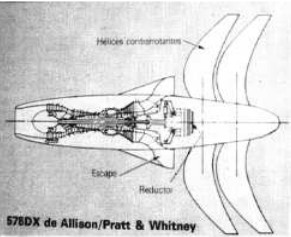
"In collaboration with Allison"
-Returning to the H. engine two new illustrations and comments.
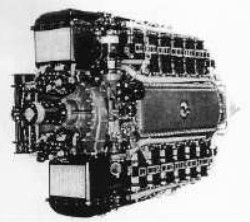
"Version with supercharger and intercoolers"
-Another characteristic of these engines is the use of individual cylinders and the sliding sleeve system.

"Version without mechanical supercharging"
-This version is the one that has the Northrop XP-56 “canard” fighter installed.
-Other projects have been the TSHE or (Twin Speed Hydrogen Expander) whose configuration is also shown below.
-There are two cases of engines that use hydrogen as fuel.
-The first example is quite classical in design, only that it uses an excess of hydrogen that passes into the afterburner after the engine, burning with the combustion air that circulates around the internal gas generator.

“P-W hydrogen engine”
-The excess hydrogen from the main combustion is burned in an afterburner not shown in this figure.
-Afterburning can occur at 3 Mach and the Hydrogen is stored in a special and complicated cryogenized way.
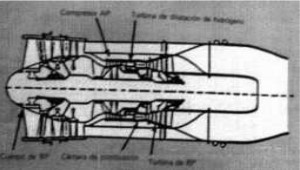
“Simplified hydrogen engine” (PiP-Int)
-The X-1800- (AG3) engine was assigned to the Northrop XP-56 “canard” type fighter. This engine was also known as the XH-2600. See main text.
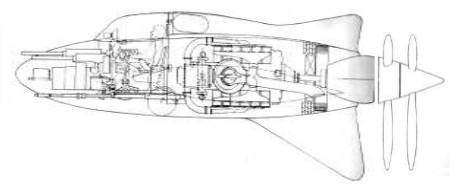
"Northrop XH-2600 Experimental Fighter Plane"
-This engine has 24 liquid-cooled cylinders in vertical H. It comes from an evolution of the X-1300 with 12 opposed cylinders. At the same time, it would be developed in larger displacements.
From Appendix 7: Below we show a new version of the PW1000. It is the PW1000G-GTF in which Volvo intervenes among others.
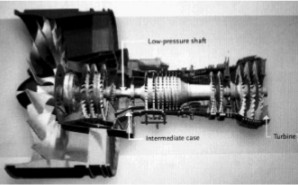
“New PW 1000”
From Appendix 9: We received a list of rocket engines by P&W, who mainly built aviation engines (Piston and Jets).
-Cobra
-LR-115
-LR-119
-LR-129
-RL-10
-RL-10A-1
-RL-10A-3
-RL-10A-3A
-RL-10A-4
-RL-10A-4-1
-RL-10A-4-2
-RL-10A-5
-RL-10A-5KA
-RL-10B-2
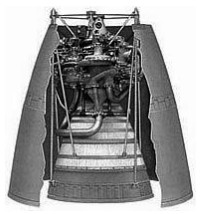
“Pratt & Whitney RL-10B-2”
-RL-10B-X
-RL-10C
-RL-10C-X
-RL-50
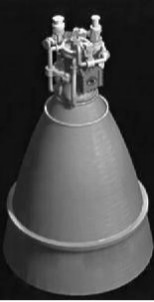
“RL-50”
-T-140 (Hall effect)
-T-220 (with Keldysh)
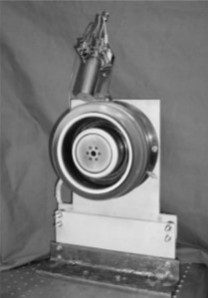
“T-140”

“T-220”
-The FT-.8 was a gas turbine that has been made on the basis of the JT-8D for commercial aviation.
-It has two shafts, one for the gas generator and the other for the power turbine. It is used for the generation of electricity or for gas pipelines, even to generate energy on oil or gas drilling rigs at sea.
-It was built in collaboration with GKN Aerospace.

“The FT-8 turbine”
-And for a program of the US Air Forces, from its Research Laboratory (AFRL) P&W, as well as GE provide solutions for what has been called AETP at Pratt & Whitney (Adaptive Engine Transition Program) , and AETD at GE (Adaptive Engine Technology Development).
-It deals with the configuration of installation and above all taking care of the ratios between compressor and turbine -and fuels- which are not as high as in military engines but more than civil ones. P&W works on the basis of the F-135 engine.

“Adaptive Engine by P&W” (PiP = P&W)
-A curiosity. At the 2013 Reno racing event, someone did a fun exercise and brought in a display of a double R-4360 engine.
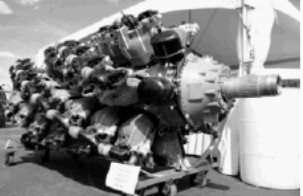
“P&W R-8720 more than 5,000 hp?”
-It turned out to be an assembly of two R-4360s (in turn two R-2800s) to astonish the fans who were leaning over out there.
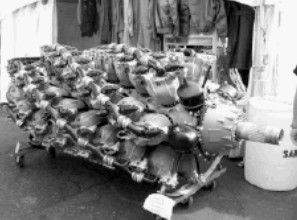
“The same exposed engine”
-It is not a real engine. It is an assembly -which has its merit and to which its creator has put the reference “PW-5600 XBSAP”. It has 56 cylinders.
-Known as "Double" Wasp Major they also nicknamed it the "Double Cob" (for its appearance).
-And a rare one. We located an engine completely unknown to the author to date. It is the R-4090, a double row radial with 11 cylinders each. Something unusual in WWII.
-It was planned for 3,000 HP.

“P&W R-4090”
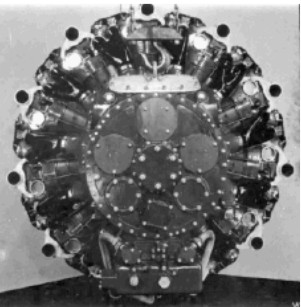
"Rear view of the same engine"
-It is free of accessories, so the cylinders can be counted, especially by the exhaust ports from the previous row.
-And some photos of the PT-1, a gas generator with free pistons. It works with opposed pistons also called "free". Photos taken by Kim McCutcheon President of AEHS. See main text for more information.

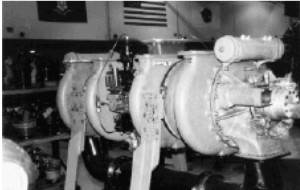
“PT-1 seen from both sides”
From Appendix 12: Future work carried out jointly with MIT and NASA. It involves driving a fan through a single reverse flow combustion chamber. It is under study and it will take a while, if the idea is established.
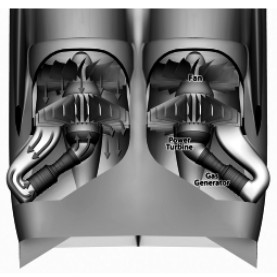
“Instalación bimotor”
-Color photograph of a P&W J-48 found on the web. Exhibited at a Museum.
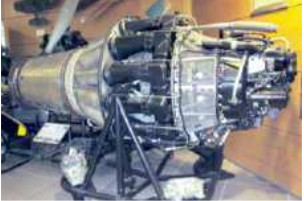
“P&W J-48” (PiP)
-The R-4360 engine that was used on the B-36 and placed on the trailing edge of the wing had to redirect the cooling air from the cylinders by means of baffles. Here's a photo of this arrangement.

“P&W R-4360, Cylinder fairings following their position”
(from behind)
Engines of PRATT & WHITNEY
Model: AETD Adaptive (XA101)
Arquitecture:
Compressor/s:
Combustion chambers:
Turbines:
Power / Thrust: / ---
Weight:
Model: AR-1000
Arquitecture:
Chambers:
Fuels:
Feed System:
Ignition:
Thrust:
Weight:
Model: Cobra rocket motor
Arquitecture:
Chambers:
Fuels:
Feed System:
Ignition:
Thrust:
Weight:
Model: Double Wasp (R-2800)
Arquitecture:
Cooling:
Total Displacement:
Bore / Stroke: x
Power:
Weight:

"P&W, Double Wasp"
Model: Escort Nuclear
Arquitecture:
Chambers:
Fuels:
Feed System:
Ignition:
Thrust:
Weight:
Model: F-100
Arquitecture:
Compressor/s:
Combustion chambers:
Turbines:
Power / Thrust: / ---
Weight:

"P&W F-100-PW-100"
Model: F-105
Arquitecture:
Compressor/s:
Combustion chambers:
Turbines:
Power / Thrust: / ---
Weight:
Model: F-117 (PW-2037)
Arquitecture:
Compressor/s:
Combustion chambers:
Turbines:
Power / Thrust: / ---
Weight:

"P&W F-117"
Model: F-119 (PW-5000)
Arquitecture:
Compressor/s:
Combustion chambers:
Turbines:
Power / Thrust: / ---
Weight:

"P&W F-119"
Model: F-135
Arquitecture:
Compressor/s:
Combustion chambers:
Turbines:
Power / Thrust: / ---
Weight:

"P&W F-135"
Model: F-401
Arquitecture:
Compressor/s:
Combustion chambers:
Turbines:
Power / Thrust: / ---
Weight:
Model: GP-7000 series con GE
Arquitecture:
Compressor/s:
Combustion chambers:
Turbines:
Power / Thrust: / ---
Weight:
Model: H-2600
Arquitecture:
Cooling:
Total Displacement:
Bore / Stroke: x
Power:
Weight:
Model: H-3730
Arquitecture:
Cooling:
Total Displacement:
Bore / Stroke: x
Power:
Weight:

"P&W, H-3730 angled rear view"
Model: Hornet (R-1690)
Arquitecture:
Cooling:
Total Displacement:
Bore / Stroke: x
Power:
Weight:

"P&W, Hornet A"
Model: Hornet B (R-1860)
Arquitecture:
Cooling:
Total Displacement:
Bore / Stroke: x
Power:
Weight:

"P&W, Hornet B"
Model: Hornet Junior
Arquitecture:
Cooling:
Total Displacement:
Bore / Stroke: x
Power:
Weight:
Model: J-42 (RR Nene Lic.)
Arquitecture:
Compressor/s:
Combustion chambers:
Turbines:
Power / Thrust: / ---
Weight:

"P&W J-42"
Model: J-48 (RR Tay Lic.)
Arquitecture:
Compressor/s:
Combustion chambers:
Turbines:
Power / Thrust: / ---
Weight:

"P&W J-48, with afterburner"
Model: J-52
Arquitecture:
Compressor/s:
Combustion chambers:
Turbines:
Power / Thrust: / ---
Weight:

"P&W J-52, another view"
Model: J-57
Arquitecture:
Compressor/s:
Combustion chambers:
Turbines:
Power / Thrust: / ---
Weight:

"P&W J-57 with afterburner"
Model: J-58
Arquitecture:
Compressor/s:
Combustion chambers:
Turbines:
Power / Thrust: / ---
Weight:

"P&W YJ-58, left side view"
Model: J-60
Arquitecture:
Compressor/s:
Combustion chambers:
Turbines:
Power / Thrust: / ---
Weight:
Model: J-75
Arquitecture:
Compressor/s:
Combustion chambers:
Turbines:
Power / Thrust: / ---
Weight:

"P&W J-75 with afterburner"
Model: J-91
Arquitecture:
Compressor/s:
Combustion chambers:
Turbines:
Power / Thrust: / ---
Weight:
Model: JT-10D, JTF-10A
Arquitecture:
Compressor/s:
Combustion chambers:
Turbines:
Power / Thrust: / ---
Weight:

"P&W JT10D, rear view"
Model: JT-11D
Arquitecture:
Compressor/s:
Combustion chambers:
Turbines:
Power / Thrust: / ---
Weight:
Model: JT-12A, JFTD-12
Arquitecture:
Compressor/s:
Combustion chambers:
Turbines:
Power / Thrust: / ---
Weight:
Model: JT-18D
Arquitecture:
Compressor/s:
Combustion chambers:
Turbines:
Power / Thrust: / ---
Weight:
Model: JT-3 (X-176), JT-3A (X-185), JT-3C (J-57), JT-3D
Arquitecture:
Compressor/s:
Combustion chambers:
Turbines:
Power / Thrust:
Weight:

"P&W JT3-C6"
Model: JT-4 (J-75), JT-4A
Arquitecture:
Compressor/s:
Combustion chambers:
Turbines:
Power / Thrust: / ---
Weight:

"P&W JT-4 = J-75"
Model: JT-7
Arquitecture:
Compressor/s:
Combustion chambers:
Turbines:
Power / Thrust: / ---
Weight:
Model: JT-8, JT-8D
Arquitecture:
Compressor/s:
Combustion chambers:
Turbines:
Power / Thrust: / ---
Weight:

"P&W JT8D-209"
Model: JT-9D, JTN-9
Arquitecture:
Compressor/s:
Combustion chambers:
Turbines:
Power / Thrust: / ---
Weight:

"P&W JT9D-7A"
Model: JTF-16
Arquitecture:
Compressor/s:
Combustion chambers:
Turbines:
Power / Thrust: / ---
Weight:
Model: JTF-22
Arquitecture:
Compressor/s:
Combustion chambers:
Turbines:
Power / Thrust: / ---
Weight:
Model: LR-115
Arquitecture:
Chambers:
Fuels:
Feed System:
Ignition:
Thrust:
Weight:
Model: LR-119
Arquitecture:
Chambers:
Fuels:
Feed System:
Ignition:
Thrust:
Weight:
Model: LR-129
Arquitecture:
Chambers:
Fuels:
Feed System:
Ignition:
Thrust:
Weight:
Model: Orbus 1
Arquitecture:
Chambers:
Fuels:
Feed System:
Ignition:
Thrust:
Weight:

"P&W Orbus 1"
Model: Project Nasa-MIT, fan rev.chamber
Arquitecture:
Compressor/s:
Combustion chambers:
Turbines:
Power / Thrust: / ---
Weight:
Model: PT-1 (free pistons)
Arquitecture:
Cooling:
Total Displacement:
Bore / Stroke: x
Power:
Weight:

"P&W PT-1 at museum"
Model: PT-2 (T-34), -G
Arquitecture:
Cooling:
Total Displacement:
Bore / Stroke: x
Power:
Weight:
Model: PT-4 (XT-45)
Arquitecture:
Cooling:
Total Displacement:
Bore / Stroke:
Power:
Weight:

"P&W XT-45"
Model: PT-5 (XT-57)
Arquitecture:
Cooling:
Total Displacement:
Bore / Stroke:
Power:
Weight:

"P&W XT-57, side view"
Model: PT-6 (en PWC)
Arquitecture:
Cooling:
Total Displacement:
Bore / Stroke: x
Power:
Weight:
Model: PT-6T (PWC) (T-400)
Arquitecture:
Cooling:
Total Displacement:
Bore / Stroke: x
Power:
Weight:
Model: PW doble row 11 cils. R-4090
Arquitecture:
Cooling:
Total Displacement:
Bore / Stroke: x
Power:
Weight:

"R-4090, rear view"
Model: PW, doble row (R-2270)
Arquitecture:
Cooling:
Total Displacement:
Bore / Stroke: x
Power:
Weight:

"P&W R-2270"
Model: PW-1000, -G (GTF)
Arquitecture:
Compressor/s:
Combustion chambers:
Turbines:
Power / Thrust:
Weight:

"GTF computer image"
Model: PW-1115
Arquitecture:
Compressor/s:
Combustion chambers:
Turbines:
Power / Thrust:
Weight:
Model: PW-1120
Arquitecture:
Compressor/s:
Combustion chambers:
Turbines:
Power / Thrust: / ---
Weight:

"P&W 1120"
Model: PW-1128
Arquitecture:
Compressor/s:
Combustion chambers:
Turbines:
Power / Thrust: / ---
Weight:

"P&W PW-1128N"
Model: PW-1129
Arquitecture:
Compressor/s:
Combustion chambers:
Turbines:
Power / Thrust: / ---
Weight:

"P&W PW-1129, cutaway"
Model: PW-1130
Arquitecture:
Compressor/s:
Combustion chambers:
Turbines:
Power / Thrust: / ---
Weight:
Model: PW-200
Arquitecture:
Compressor/s:
Combustion chambers:
Turbines:
Power / Thrust: / ---
Weight:

"P&W PW-200"
Model: PW-2000 series
Arquitecture:
Compressor/s:
Combustion chambers:
Turbines:
Power / Thrust:
Weight:

"P&W PW2000, drawing"
Model: PW-2037
Arquitecture:
Compressor/s:
Combustion chambers:
Turbines:
Power / Thrust: / ---
Weight:

"P&W PW-2037"
Model: PW-2040
Arquitecture:
Compressor/s:
Combustion chambers:
Turbines:
Power / Thrust: / ---
Weight:
Model: PW-2337
Arquitecture:
Compressor/s:
Combustion chambers:
Turbines:
Power / Thrust: / ---
Weight:
Model: PW-2340
Arquitecture:
Compressor/s:
Combustion chambers:
Turbines:
Power / Thrust: / ---
Weight:
Model: PW-3000 series
Arquitecture:
Compressor/s:
Combustion chambers:
Turbines:
Power / Thrust: / ---
Weight:
Model: PW-3005
Arquitecture:
Compressor/s:
Combustion chambers:
Turbines:
Power / Thrust: / ---
Weight:

"Pratt & Whitney PW3005 turboeje"
Model: PW-304 “Suntan”
Arquitecture:
Compressor/s:
Combustion chambers:
Turbines:
Power / Thrust: / ---
Weight:

"P&W X-304"
Model: PW-4000 series
Arquitecture:
Compressor/s:
Combustion chambers:
Turbines:
Power / Thrust: / ---
Weight:

"P&W PW-4000, cutaway"
Model: PW-4052
Arquitecture:
Compressor/s:
Combustion chambers:
Turbines:
Power / Thrust: / ---
Weight:
Model: PW-4056
Arquitecture:
Compressor/s:
Combustion chambers:
Turbines:
Power / Thrust: / ---
Weight:
Model: PW-4060
Arquitecture:
Compressor/s:
Combustion chambers:
Turbines:
Power / Thrust: / ---
Weight:
Model: PW-4062
Arquitecture:
Compressor/s:
Combustion chambers:
Turbines:
Power / Thrust: / ---
Weight:
Model: PW-4068
Arquitecture:
Compressor/s:
Combustion chambers:
Turbines:
Power / Thrust: / ---
Weight:
Model: PW-4084
Arquitecture:
Compressor/s:
Combustion chambers:
Turbines:
Power / Thrust: / ---
Weight:
Model: PW-4090
Arquitecture:
Compressor/s:
Combustion chambers:
Turbines:
Power / Thrust: / ---
Weight:

"PW-4090 perspective"
Model: PW-4098
Arquitecture:
Compressor/s:
Combustion chambers:
Turbines:
Power / Thrust: / ---
Weight:
Model: PW-4152
Arquitecture:
Compressor/s:
Combustion chambers:
Turbines:
Power / Thrust: / ---
Weight:
Model: PW-4158
Arquitecture:
Compressor/s:
Combustion chambers:
Turbines:
Power / Thrust: / ---
Weight:
Model: PW-4168
Arquitecture:
Compressor/s:
Combustion chambers:
Turbines:
Power / Thrust: / ---
Weight:
Model: PW-4256
Arquitecture:
Compressor/s:
Combustion chambers:
Turbines:
Power / Thrust: / ---
Weight:
Model: PW-4360
Arquitecture:
Compressor/s:
Combustion chambers:
Turbines:
Power / Thrust: / ---
Weight:
Model: PW-4460
Arquitecture:
Compressor/s:
Combustion chambers:
Turbines:
Power / Thrust: / ---
Weight:
Model: PW-4462
Arquitecture:
Compressor/s:
Combustion chambers:
Turbines:
Power / Thrust: / ---
Weight:
Model: PW-4530
Arquitecture:
Compressor/s:
Combustion chambers:
Turbines:
Power / Thrust: / ---
Weight:
Model: PW-5000 (on JSF-119 aircraft, F-119 engine)
Arquitecture:
Compressor/s:
Combustion chambers:
Turbines:
Power / Thrust:
Weight:

"P&W PW-5000"
Model: PW-6000 series
Arquitecture:
Compressor/s:
Combustion chambers:
Turbines:
Power / Thrust: / ---
Weight:

"P&W PW-6000, drawing"
Model: PW-6020
Arquitecture:
Compressor/s:
Combustion chambers:
Turbines:
Power / Thrust: / ---
Weight:
Model: PW-6021
Arquitecture:
Compressor/s:
Combustion chambers:
Turbines:
Power / Thrust: / ---
Weight:
Model: PW-8000
Arquitecture:
Compressor/s:
Combustion chambers:
Turbines:
Power / Thrust: / ---
Weight:

"P&W PW-8000, cutaway"
Model: RD-180 (Lic.) See Amross
Arquitecture:
Chambers:
Fuels:
Feed System:
Ignition:
Thrust:
Weight:
Model: RJ-40
Arquitecture:
Chambers:
Fuels:
Feed System:
Ignition:
Thrust:
Weight:
Model: RL “Cobra”
Arquitecture:
Chambers:
Fuels:
Feed System:
Ignition:
Thrust:
Weight:
Model: RL-10 (LR-10) Gran serie
Arquitecture:
Chambers:
Fuels:
Feed System:
Ignition:
Thrust:
Weight:

"P&W RL-10"
Model: RL-100
Arquitecture:
Chambers:
Fuels:
Feed System:
Ignition:
Thrust:
Weight:
Model: RL-10A-1 (LR-115)
Arquitecture:
Chambers:
Fuels:
Feed System:
Ignition:
Thrust:
Weight:
Model: RL-10A-3
Arquitecture:
Chambers:
Fuels:
Feed System:
Ignition:
Thrust:
Weight:

"P&W RL-10A-3 Lockheed-Martin"
Model: RL-10A-3A
Arquitecture:
Chambers:
Fuels:
Feed System:
Ignition:
Thrust:
Weight:
Model: RL-10A-4
Arquitecture:
Chambers:
Fuels:
Feed System:
Ignition:
Thrust:
Weight:
Model: RL-10A-4-1
Arquitecture:
Chambers:
Fuels:
Feed System:
Ignition:
Thrust:
Weight:
Model: RL-10A-4-2
Arquitecture:
Chambers:
Fuels:
Feed System:
Ignition:
Thrust:
Weight:
Model: RL-10A-5
Arquitecture:
Chambers:
Fuels:
Feed System:
Ignition:
Thrust:
Weight:
Model: RL-10A-5KA
Arquitecture:
Chambers:
Fuels:
Feed System:
Ignition:
Thrust:
Weight:
Model: RL-10B-2
Arquitecture:
Chambers:
Fuels:
Feed System:
Ignition:
Thrust:
Weight:

"Pratt & Whitney RL-10B-2"
Model: RL-10B-X
Arquitecture:
Chambers:
Fuels:
Feed System:
Ignition:
Thrust:
Weight:
Model: RL-10C
Arquitecture:
Chambers:
Fuels:
Feed System:
Ignition:
Thrust:
Weight:
Model: RL-10C-X
Arquitecture:
Chambers:
Fuels:
Feed System:
Ignition:
Thrust:
Weight:
Model: RL-20
Arquitecture:
Chambers:
Fuels:
Feed System:
Ignition:
Thrust:
Weight:
Model: RL-200
Arquitecture:
Chambers:
Fuels:
Feed System:
Ignition:
Thrust:
Weight:
Model: RL-50
Arquitecture:
Chambers:
Fuels:
Feed System:
Ignition:
Thrust:
Weight:

"P&W RL-50"
Model: RL-60
Arquitecture:
Chambers:
Fuels:
Feed System:
Ignition:
Thrust:
Weight:

"P&W RL-60, complete"
Model: RLX
Arquitecture:
Chambers:
Fuels:
Feed System:
Ignition:
Thrust:
Weight:

"P&W RLX"
Model: ST-6 (later PWC)
Arquitecture:
Compressor/s:
Combustion chambers:
Turbines:
Power / Thrust: / ---
Weight:

"Pratt & Whitney ST6-771"
Model: ST-9
Arquitecture:
Compressor/s:
Combustion chambers:
Turbines:
Power / Thrust: / ---
Weight:
Model: STF-300
Arquitecture:
Compressor/s:
Combustion chambers:
Turbines:
Power / Thrust: / ---
Weight:
Model: T-101 (PWC PT6 variant)
Arquitecture:
Compressor/s:
Combustion chambers:
Turbines:
Power / Thrust: / ---
Weight:
Model: T-140 Hall
Arquitecture:
Compressor/s:
Combustion chambers:
Turbines:
Power / Thrust: / ---
Weight:

"P&W T-140"
Model: T-220 Hall (+Keldish)
Arquitecture:
Compressor/s:
Combustion chambers:
Turbines:
Power / Thrust: / ---
Weight:

"P&W T-220"
Model: T-32
Arquitecture:
Compressor/s:
Combustion chambers:
Turbines:
Power / Thrust: / ---
Weight:
Model: T-34
Arquitecture:
Compressor/s:
Combustion chambers:
Turbines:
Power / Thrust: / ---
Weight:

"P&W, T-34"
Model: T-400 (PWC PT6-T)
Arquitecture:
Compressor/s:
Combustion chambers:
Turbines:
Power / Thrust: / ---
Weight:
Model: T-45
Arquitecture:
Compressor/s:
Combustion chambers:
Turbines:
Power / Thrust: / ---
Weight:
Model: T-48
Arquitecture:
Compressor/s:
Combustion chambers:
Turbines:
Power / Thrust: / ---
Weight:
Model: T-52
Arquitecture:
Compressor/s:
Combustion chambers:
Turbines:
Power / Thrust: / ---
Weight:
Model: T-57
Arquitecture:
Compressor/s:
Combustion chambers:
Turbines:
Power / Thrust: / ---
Weight:
Model: T-73
Arquitecture:
Compressor/s:
Combustion chambers:
Turbines:
Power / Thrust: / ---
Weight:
Model: T-74 (PT-6)
Arquitecture:
Compressor/s:
Combustion chambers:
Turbines:
Power / Thrust: / ---
Weight:
Model: T-800 (AVCO Lyc.)
Arquitecture:
Compressor/s:
Combustion chambers:
Turbines:
Power / Thrust: / ---
Weight:
Model: TF-30
Arquitecture:
Compressor/s:
Combustion chambers:
Turbines:
Power / Thrust: / ---
Weight:

"P&W TF30-P100"
Model: TF-33
Arquitecture:
Compressor/s:
Combustion chambers:
Turbines:
Power / Thrust: / ---
Weight:

"P&W TF-33P-7, angled front view"
Model: THAAD
Arquitecture:
Chambers:
Fuels:
Feed System:
Ignition:
Thrust:
Weight:

"P&W THAAD"
Model: Triton Nuclear
Arquitecture:
Chambers:
Fuels:
Feed System:
Ignition:
Thrust:
Weight:
Model: Twin Hornet (R-2180)
Arquitecture:
Cooling:
Total Displacement:
Bore / Stroke: x
Power:
Weight:

"P&W, Twin Hornet"
Model: Twin Wasp (R-1830) y (R-2000)
Arquitecture:
Cooling:
Total Displacement:
Bore / Stroke: x
Power:
Weight:

"P&W, R-1830"
Model: Twin Wasp Junior (R-1535)
Arquitecture:
Cooling:
Total Displacement:
Bore / Stroke: x
Power:
Weight:

"P&W, R-1535-B"
Model: V-2500 series en IAE
Arquitecture:
Compressor/s:
Combustion chambers:
Turbines:
Power / Thrust: / ---
Weight:
Model: Wasp (R-1340)
Arquitecture:
Cooling:
Total Displacement:
Bore / Stroke: x
Power:
Weight:

"P&W, Wasp"
Model: Wasp Junior (R-985)
Arquitecture:
Cooling:
Total Displacement:
Bore / Stroke: x
Power:
Weight:

"P&W, Wasp Junior"
Model: Wasp Major (R-4360)
Arquitecture:
Cooling:
Total Displacement:
Bore / Stroke: x
Power:
Weight:

"P&W, R-4360"
Model: X-1800
Arquitecture:
Cooling:
Total Displacement:
Bore / Stroke: x
Power:
Weight:

"P&W XH.2600"
Model: X-3130
Arquitecture:
Cooling:
Total Displacement:
Bore / Stroke: x
Power:
Weight:

"P&W, X-3130"
Model: XH-3130
Arquitecture:
Cooling:
Total Displacement:
Bore / Stroke: x
Power:
Weight:
Model: XH-3730
Arquitecture:
Cooling:
Total Displacement:
Bore / Stroke: x
Power:
Weight:

"P&W XH-3730"
Model: XLR-129-P1
Arquitecture:
Chambers:
Fuels:
Feed System:
Ignition:
Thrust:
Weight:
Model: XNR-2000
Arquitecture:
Chambers:
Fuels:
Feed System:
Ignition:
Thrust:
Weight:
Model: Yellow Jacket (R-2060)
Arquitecture:
Cooling:
Total Displacement:
Bore / Stroke: x
Power:
Weight:

"P&W, R-2060"


